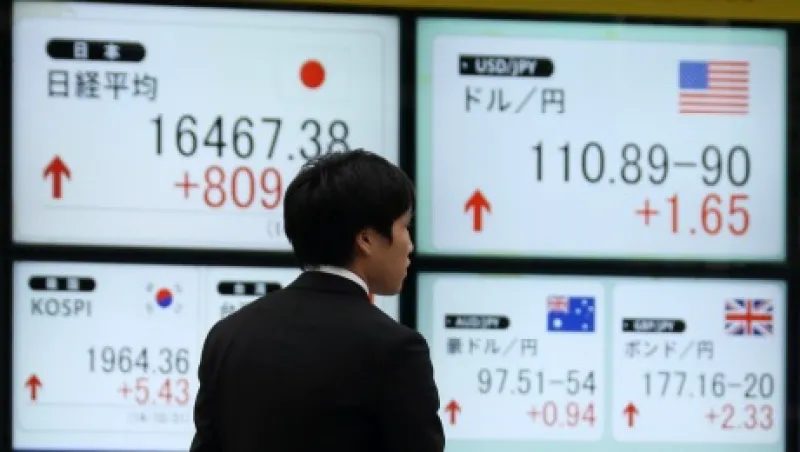The Bank of Japan, led by governor Haruhiko Kuroda, today broadened its easing program to 80 trillion yen ($720 billion) expansion of the nation’s monetary base. Separately, in a bid to snare higher returns, Japan’s Government Pension Investment Fund announced a shift of assets toward domestic and foreign equities as yields on Japanese government bonds remain negligible. With the Bank of Japan recommitting to driving inflation and more investment dollars turning away from Japanese government bond markets, some analysts see inflation coming down the pike. “With the economy on the verge of bottoming, we believe it is time to start watching for a rise in yields,” wrote Barclays inflation-linked strategist Khrishnamoorthy Sooben in a research note released this morning, adding, “We maintain our long-term forecast of a bear steepening”. Sooben’s team expects Japanese government bonds to continue to trade within a range for the remainder of the year with yields falling until around mid-November, then rising toward year-end on policy expectations.
Corporations report mixed results. BNP Paribas, the largest French bank by assets, reported an 11 percent gain in net income year-over-year, largely on the back of increased profitability in fixed-income trading. Anheuser-Busch InBev, the world’s largest brewing company, disappointed investors with lower-than-anticipated third-quarter earnings in connection with lower volume sales in several markets, including the U.S. and Brazil.
Data suggests euro zone economy has hit inflection point. Euro zone consumer price inflation data for October released this morning showed the headline index registering at 0.4 percent year-over-year, roughly in line with consensus forecasts. As expected, energy costs in the region declined for the fourth consecutive month on weaker oil prices. The region’s unemployment rate for September, also announced, remained unchanged.
U.S. consumer data on deck. Personal Consumption Expenditures for September are forecast to show no major shift in activity at the cash register and flat income levels, while University of Michigan consumer sentiment index levels are expected to moderate slightly for the month.
Ukraine will have heat this winter. Russia and Ukraine announced an agreement today to restore natural gas trading between the two nations. This is a success for European Union leaders, who brokered the negotiations amid Western trade sanctions over military tensions. Separately, a number of analysts have forecast a rise in the Russian central bank’s benchmark rate in the coming weeks as the ruble remains near record lows despite a recent rebound.
Portfolio Perspective: Fall Back Now, Spring Ahead Later — Aron Gampel, Scotiabank
The global economy’s struggle to generate and sustain momentum reflects the lingering problems that continue to undermine developed markets. Debt-related strains are a key culprit. Deleveraging, on either the government or household levels, or in some countries and regions, continues to drag on activity. The lack of competitiveness is forcing ongoing adjustments to wages and productivity at the expense of employment in many countries. Business investment in nonresidential construction remains historically slow, reflecting a persistently high level of uncertainty and excess capacity around the world. Increased regulatory guidelines and enhanced capital requirements have reinforced more cautious lending activity by financial institutions following the 2008–’09 financial crisis.
Nevertheless, we remain cautiously optimistic. The U.S. expansion is gaining increased traction. U.K. output growth continues to be supported by a high level of construction activity. Increased investment is helping to bolster prospects in India. Activity in Latin America — Mexico and Colombia in particular — is being underpinned by structural labor market and industrial reforms. On the other hand, China and a number of other developing nations in the Asia-Pacific region are recording more moderate growth, a reflection of reduced domestic demand and in the case of China, slower housing activity. Regardless, many of these nations are still growing at rates that are at or near the top of the international growth ladder.
Aron Gampel is a vice-president and deputy chief economist for Scotiabank in Toronto.






